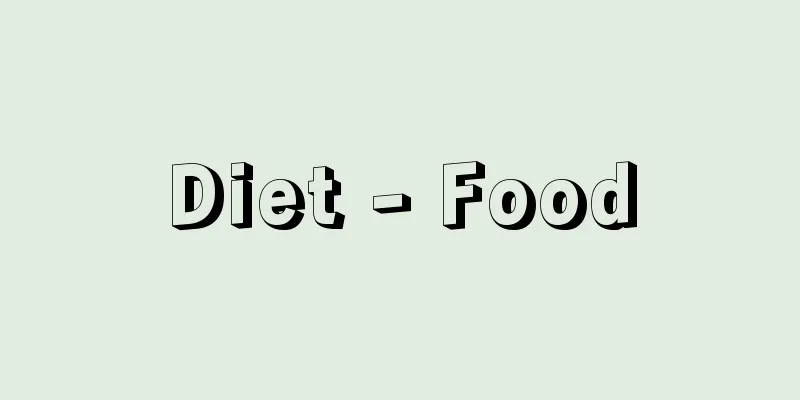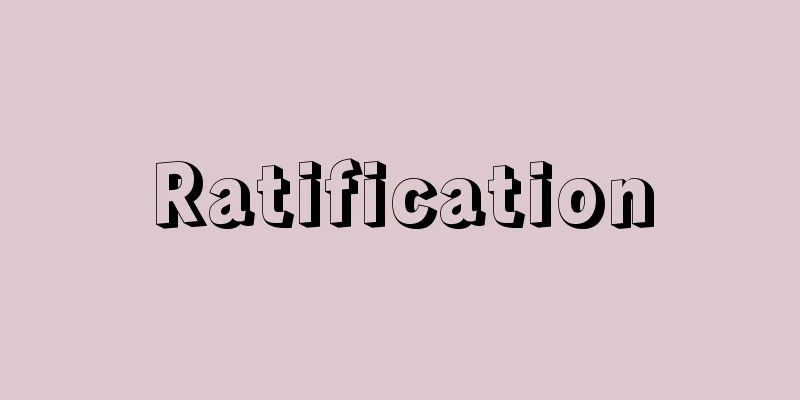Diet - Food

|
It refers to the habits of animals when they consume food. It describes the type of food and the characteristics of the behavior of ingesting it, but in the narrow sense it refers only to the type of food. When categorizing diet by type of food, eating animal food is called carnivorous, eating plant food is called herbivorous, eating both animal and plant food is called omnivorous, and eating the corpses of living things, their decomposing parts, or excrement is called scavengers. Examples of animals on the African grasslands are lions as carnivores, zebras as herbivores, hyenas as animals with strong scavengers, and some mongooses as animals that are somewhat omnivorous. When categorizing diet by the breadth of food selection, eating organisms of a specific species or genus is called monophagous, narrow food selection, including monophagy, and wide food selection is called polyphagous. Pangolins are monophagous, mainly eating ants and termites, while omnivorous mongooses are also polyphagous. However, in reality these classifications only apply to typical diets, and the distinctions between them are not strict. Animals have body structures, such as mouthparts, digestive organs, skeletons, and muscles, as well as locomotor and digestive functions, suited to their diet. For example, herbivorous mammals have mortar-shaped teeth suited to grinding grass, and are characterized by long intestines. Ruminant ungulates such as cows even have large, separated stomachs. Conversely, carnivorous mammals have sharp teeth suited to tearing meat, and short intestines. On the other hand, even animals of the same species often have different diets due to environmental changes depending on the season or location, or depending on the developmental stage, and their diet may also change due to the presence of other animals with similar diets. For example, sparrows eat a lot of rice grains in the fall, but eat a lot of insects during the breeding season from spring to summer. Ayu also eat animal-based foods such as zooplankton before and for a while after they swim upstream, but after they have swim upstream they mainly eat algae that attach to the surfaces of stones. Animals with different feeding habits occupy different positions within an ecosystem. There are herbivores, which eat the plant matter produced by photosynthesis, and carnivores, which eat the herbivores and also eat each other. Omnivores also play a role in this relationship. The carcasses and waste of animals and plants are broken down by scavengers into a form that can serve as a source of nutrition for plants. In this way, animals with different feeding habits form a certain order that creates a flow of materials in the ecosystem. [Kenji Takamura] Source: Shogakukan Encyclopedia Nipponica About Encyclopedia Nipponica Information | Legend |
|
動物が食物を摂取する際の習性をいう。食物の種類とそれを摂取する行動の特徴を表すものであるが、狭い意味では食物の種類のみをさす。食物の種類で食性を類別すると、動物性の食物を食べることを肉食性、植物性の食物を食べることを草食性、動物性と植物性との両方の食物を食べることを雑食性、生物の死体やその分解しかかったもの、または排出物を食べることを腐食性という。アフリカの草原動物では、肉食動物はライオン、草食動物はシマウマ、腐食性の強い動物はハイエナ、そしてやや雑食性の動物はマングース類の一部がその例である。食物の選択範囲の広さで食性を分類すると、特定の種あるいは属の生物を食べることを単食性、単食性も含めて食物の選択範囲の狭いことを狭食性、選択範囲の広いことを広食性という。センザンコウはアリやシロアリを主食とする狭食性で、雑食性のマングースの仲間は広食性でもある。ただし、実際にはこれらの類型分けは典型的な食性にしか当てはめられず、互いの区別は厳密なものではない。 動物はその食性に適した口器、消化器官、骨格、筋肉などの体構造や運動・消化機能をもっている。たとえば草食性の哺乳(ほにゅう)類は歯が臼(うす)状になって草をすりつぶすのに適しており、また腸が長いのが特徴である。ウシなどの反芻(はんすう)を行う有蹄(ゆうてい)類では、大きな分室した胃さえもつ。逆に肉食性の哺乳類は歯が鋭く肉を引き裂くのに適し、また腸は短い。一方、同一種の動物でも季節や場所による環境変化や、発育段階によって食物が異なることも多く、また食性のよく似た他種の動物の存在によって食物の変わることもある。たとえば、スズメは秋にはイネの籾(もみ)をかなり食べるが、春から夏の繁殖期には昆虫を多く食べる。また、アユは川へ遡上(そじょう)する前と、遡上してしばらくは動物プランクトンなどの動物性の食物をとるが、遡上後しばらくするともっぱら石の表面に付着する藻を食べる。 食性の異なる動物は生態系内の異なった位置を占める。光合成によって生産された植物体を食べる草食動物と、その草食動物を食べ、またお互いを食い合う肉食動物がいる。雑食動物もこの関係に加わる。動植物の死体や排出物は腐食動物の作用も受けて植物の栄養源となる形にまで分解する。このように食性の異なる動物は、一定の順序で生態系の物質の流れを構成している。 [高村健二] 出典 小学館 日本大百科全書(ニッポニカ)日本大百科全書(ニッポニカ)について 情報 | 凡例 |
>>: Diet therapy (Dietary therapy)
Recommend
First time climbing a mountain - Uiyamabumi
Motoori Norinaga's theory of learning. Publis...
Sart people - Sartjin (English spelling)
A term used to refer to oasis settlers in Central ...
Ujime - Lady of the clan
〘Noun〙 In the ritsuryo system, a female official s...
Territorial state - Territorialstaat (German)
A regional state that constituted the Kingdom of ...
Naigaiwata Company
A representative example of Japanese-funded spinni...
Five bodies - Ittsumi
...There are Fukuro Nagoya (hachisun Nagoya) obi ...
Intellectualism
〘noun〙① A position that generally values the int...
Karayo
A Japanese art term used in the fields of calligr...
Cheirotonus parryi (English spelling)
… [Chokane Hayashi]. … *Some of the terminology t...
Iron bridle
A general term used by Chinese in the Sui and Tan...
Golden Shinobuhiba - Golden Shinobuhiba
...Hiyokuhiba (Itohibaba) has thin, drooping bran...
Qasim Harawī (English spelling)
…Ibn al-'Awwām's (mid-12th century) Book ...
Ban'e
A pattern that arranges motifs of flowers, birds,...
Villain novel - novella picaresca; picaresque novel
Also called rogue novel or picaresque novel, it is...
Separate post - Bechinousho
It was one of the household institutions for the r...









